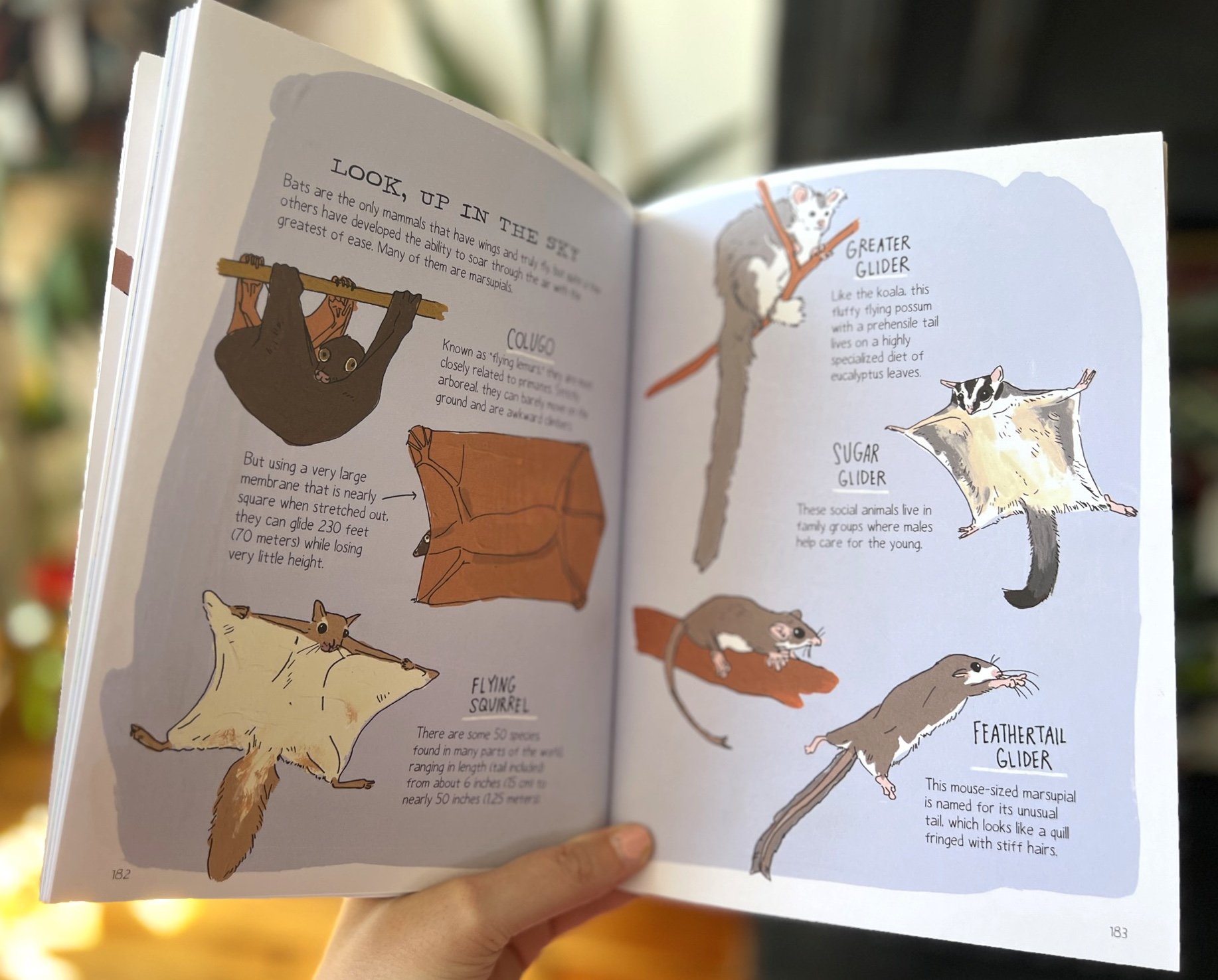“Both playful and sophisticated, this picture book from the creators of Can I Eat That? and What’s Cooking? combines an architectural tour with an existential quest in a story with an unusual protagonist: a small red brick. Growing up in the city, Brick marvels at the tall structures and wonders “where she fit in to all of this. What great things might she become?” Her mother offers some profound reassurance: “Great things begin with small bricks.” But Brick needs to find her own meaning, and she sets off on a journey, visiting famous brick structures around the world in search of belonging. Eventually, an all-roads-lead-to-home sentiment sets Brick happily back where she started, helping to pave the way for future adventurers. Combining ink lines with deeply saturated blocks of color, the uncluttered illustrations provide a stylish showcase of architectural structures, which are further explained in an appendix. Though the themes of finding a path and purpose in life are overt, this unusual, creative title may strike a chord with a wide audience, from young kids discovering their talents to new graduates.” Publishers Weekly
“Coming to terms with one’s true nature and seeking one’s destiny are part of a process perhaps best begun in childhood. That, at any rate, is when a little red cuboid sets out to discover her place in the world in Joshua David Stein’s thoughtful picture book “Brick, Who Found Herself in Architecture”. “Great things begin with small bricks,” Brick’s mother tells her, as the two trot on tiny stick legs down what appears to be a Brooklyn street lined with brick buildings. “Look around, you’ll see.” Soon Brick is old enough to travel on her own. She sets off at night in a dinghy and—don’t ask me how—makes landfall beside Malbork Castle in northern Poland, the first stop of her world tour.
Julia Rothman’s delicate illustrations in white, black, and shades of yellow and red capture the man-made, brick-by-brick majesty of St. Basil’s Cathedral in Moscow, the spiraling Malwiya Minaret in Samarra, Iraq, and the Great Wall of China, among other wonders, as well as humbler structures, such as the boxy houses of Long Island’s Levittown and the Lutyens-designed Grosvenor housing estate in London. Children ages 4-7 may be ever so slightly crestfallen that Brick ultimately decides to choose a modest and unobtrusive place in the world, but from the smile on her flat little face they will see that she, at least, is content.” Wall Street Journal
“For anyone who's ever wondered where life will take them, and especially for little ones who can only dream of what the wide world holds, Brick's story will advise and inspire. Each structure she visits is identified as a real place, which grounds the story while also expanding its scope. Illustrations are rendered appropriately in oranges and reds and make excellent use of white space. A delicate black line describes the architecture with dexterity, allowing readers a glimpse of wonders that may await on their own journeys as they root for Brick to succeed on hers. Ultimately, Brick learns she must let go of her worries before reaching a place where she can be part of a "wide and lovely" whole, arriving at what is perhaps, for her, "the perfect place to be." Shelf Awareness









































































































































































